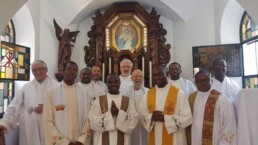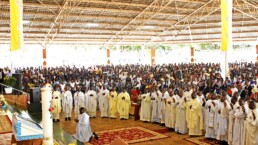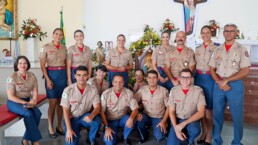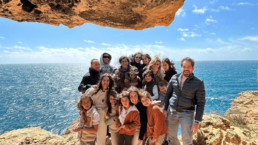Burundi is divided into two ethnic groups: the Hutus and the Tutsis. This division has been a source of internal conflict for many years, especially between 1993 and 2005, when they were in civil war and it was very difficult to achieve peace.
Schoenstatt in Burundi
How did Schoenstatt arrive in Burundi? In 1962 the first Schoenstatt Sisters of Mary came to Burundi and the Schoenstatt Fathers arrived in 1974. The Schoenstatt Fathers began to work in the parish of Mutumba. There the first Schoenstatt groups were formed, which later spread to the secondary schools throughout the country. Twenty years later, the Shrine and the Mount Sion Center in Gikungu were blessed. In 2003, the first Schoenstatt Father from Burundi was ordained as a priest.
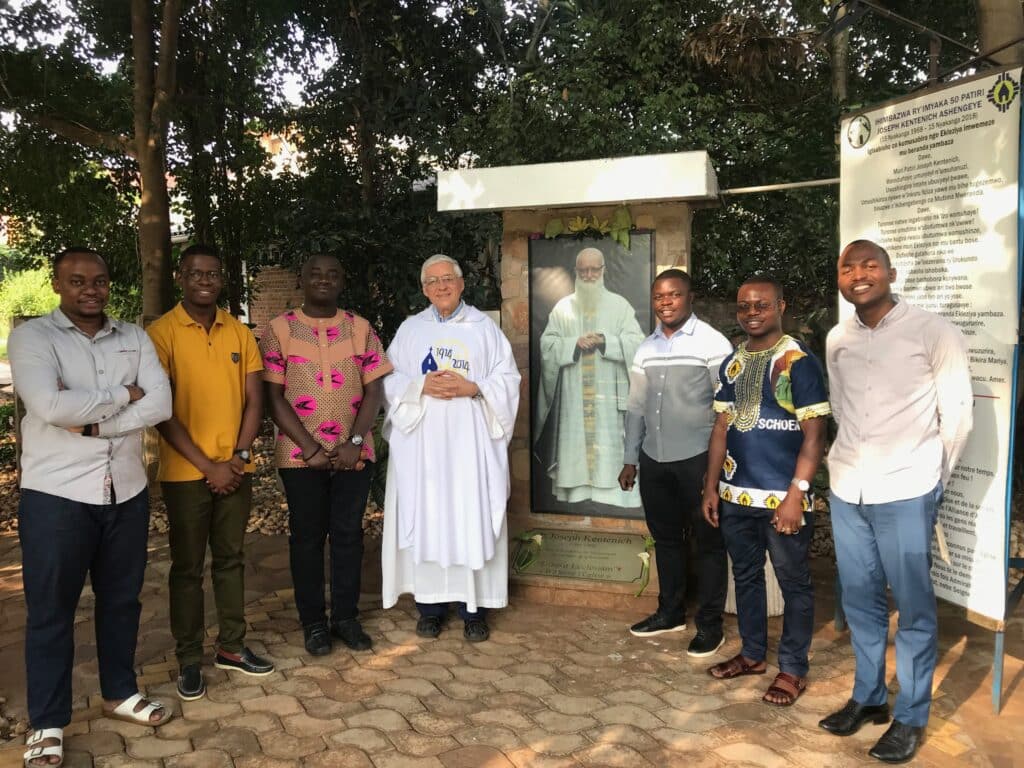
Father Claudio Jeria provides us with more information about the life of the Schoenstatt Movement in this country.
Father Claudio Jeria (Chilean) celebrated 40 years as a priest last year, 25 of them in Burundi. His missionary spirit is reflected in the following words: “Just as St. Paul went beyond his Jewish borders and opened the way of the Church for everyone – cor Pauli, cor mundi – this missionary joy belongs to my vocation as a priest and as a man of Sion, and it is my greatest joy Driven by this missionary spirit I have come to Burundi, and I rejoice in the gifts that God has prepared for me here”.
The joy of being a missionary
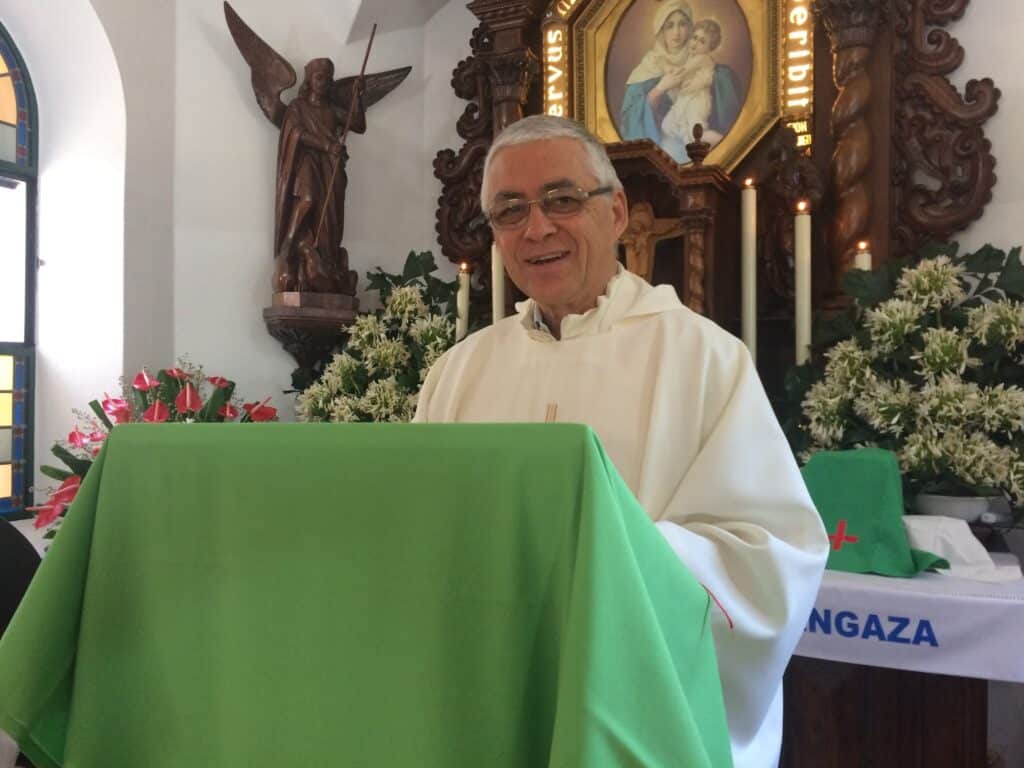
Being a missionary is a joy for Father Claudio Jeria, but he also had to overcome obstacles: “Arriving in Burundi brought with it two obvious difficulties: I had to communicate the Good News and Schoenstatt in a language different from my own, since French and Kirundi are spoken there; and I had to work in a new culture, strange and unknown to me”. “I arrived in Burundi in 1996, in the middle of the fratricidal war between Hutus and Tutsis. It was a very hard time that lasted about 10 years. It was the time of the Rwandan genocide (1994) and the invasion of Congo by Rwandan and Ugandan troops (1996-2003). It was very easy to encounter death, the bullets literally whistled… in the midst of all this, I had to help establish a beacon of hope for the suffering people: the Shrine of our beloved Mother Thrice Admirable and Queen of Schoenstatt, which today is called the Shrine of Reconciliation and Peace“.
Mary conquers hearts and receives a crown
Father shares that in this context of war, the Blessed Mother was opening the way for peace in the country: “She was gradually conquering hearts to spread a current of peace throughout the country. As Burundians, we proposed to crown Mary as “Queen of Peace“, to ask for this peace as a gift from Heaven; but we also proposed to work for peace, as authentic children of God and servants of Mary”.
On the day of the coronation, about 30,000 people arrived from Burundi and even from other countries such as Tanzania, Rwanda, Congo, Switzerland and Spain. “I thought: how often in these 13 years I have lived in Burundi have I seen thousands and thousands of people fleeing from bullets and death in this very same place. During that time, people were seeking refuge in our Mother’s house. Our shrine had no weapons to offer, but it had something – or “someone” – who was much more important for the people: Mary, with her Divine Child in her arms. She was able to offer protection. Mary was a mother full of love, but at the same time, strong and powerful. Now, those same people wanted to thank the Virgin for the protection they had been receiving for so many years. The whole crowd came to offer themselves, with the goal of creating a new nation, a nation of brothers and sisters, where everyone can have food, respect and joy“.
The crown given to Mary has 3 important symbols: The drum with the colors of the national flag, a sign of the kingdom, of political power from which the process of conversion must begin; the wedding rings, a symbol of the family; the clay pot with three straws to drink together, according to the traditional custom, a sign of friendship and reconciliation.
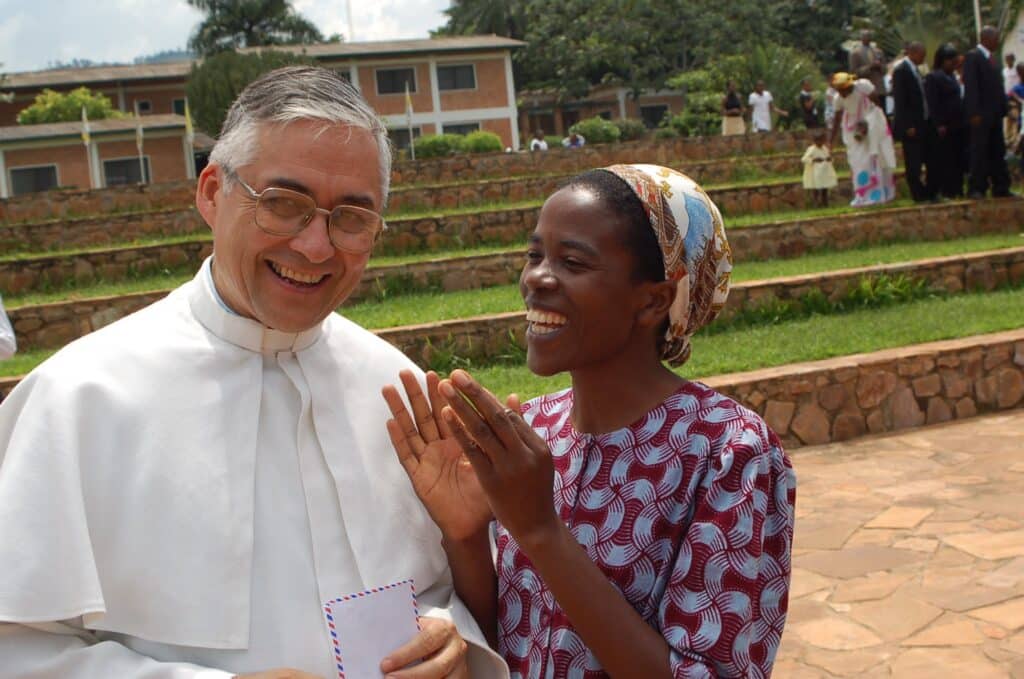
Exchange of treasures
The “encounter” with this new culture involves not only giving and spreading the mission, but also to receive and to allow oneself to be complemented, to help and encouraged to grow… In this sense, Father Claudio Jeria speaks of the treasures received in these 25 years: “First of all, the importance given to faith by the African people. There is an inner conviction in the African heart: there is an invisible world that is real, the world of faith, the world of the beyond, which must be given an important place in our lives. Secondly, it is about solidarity. Friends, neighbors, etc. are very important, and we have to foster these relationships. This is what Nelson Mandela proclaims with the Ubuntu philosophy: If I want my life to be a successful life, I must also strive to make the lives of others successful. Otherwise, my efforts for my own happiness will be in vain. The third gift is the importance that Africans give to family and life. It is a priceless joy. To see so many children, so many young people and the efforts of families to stay together. Here in Africa, life and family resonate everywhere. Youth and children abound, and they are the joy and the promising future in Africa. Fourthly, another gift I found here was the joy of working in an international team. Naturally, as expected of siblings, not everything was always rosy. But I never failed to feel the fraternal warmth of our relationships. I can also attest that I have strengthened my ability to establish relationships and that this has encouraged me to continue to grow. Together we work, together we reap“.
Related posts
April 9, 2024
A special day of celebration for the Schoenstatt Fathers in Burundi
“This is the day which the Lord has made; let us rejoice and be glad in it” (Psalm 118;24). Truly, every day is made by the Lord God, the…
April 5, 2024
The Brasilia Shrine inaugurates its Jubilee Year with a pilgrimage by the Armed Forces
We have often heard the statement: "Jubilees are times of special graces! And this statement becomes even truer when it happens during…
April 4, 2024
The unprecedented Family Missions on the island of Formentera
Formentera is sun, beautiful beaches, pubs, parties... But it is also hard work, perseverance, struggle... This is the reality, complex as…

